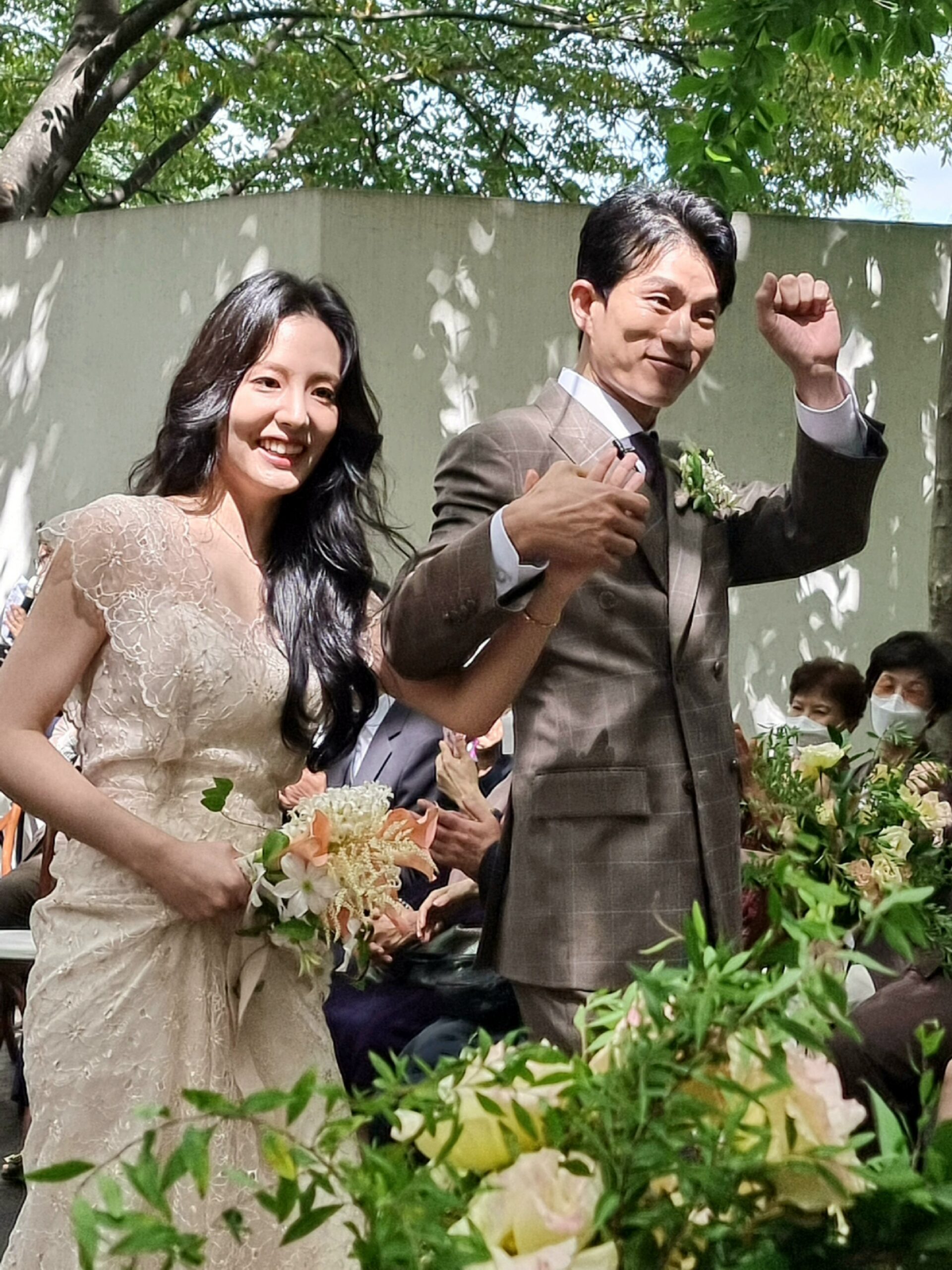|
Getting your Trinity Audio player ready...
|
Are you ready for wedding season in South Korea? Before attending my first Korean wedding, I wondered if I’d experience major culture shock. So, I watched a few YouTube videos to prepare. Turns out, most traditions felt familiar—except for one surprising detail. Before the ceremony, your first stop isn’t the venue—it’s the ATM. Here’s what you need to know before attending a Korean wedding.
Table of Contents
- What You Need to Know Before Attending a Korean Wedding
- Modern vs Traditional Weddings
- Religion
- Traditions
- Like it? Pin it!

What You Need to Know Before Attending a Korean Wedding
Money Table & the Pandemic
Not unsurprisingly, once we arrived we needed to sign in and have our temperatures taken. No problem, it’s better to be safe than sorry. Everyone, except the bridal party during the ceremony, was masked up.
If you do get an invitation to a wedding during the pandemic, you should feel honored. There are mandates on how many people can attend a wedding, so to make the cut means your presence is really wanted. Weddings can have thousands in attendance, but the wedding I attended had a maximum of 59 guests, and Steven and I were two of them.
A few steps from that table sits the money table. This is where you would typically see a bunch of beautifully wrapped gifts back in America. But here in Korea, the traditional gift is cash. I learned from the videos I watched that it is also customary to give odd number amounts of money. I bought a pretty money envelope from Daiso and wrote a simple congratulatory message inside.
Meal & Meal Ticket
Once you hand the money envelope to one of the grooms, you will receive a meal ticket. The meal ticket entitles you to a plate at the reception dinner. Our meal was buffet-style, but they also have sit-down dinners as well. The bride, groom and the parents will visit with each table to say thank you for coming. This was slightly awkward because of the language barrier.
There were no speeches during the meal nor dancing afterward. We were assigned seating and instructed that once we finished eating, we were free to go. This is a great opportunity to wear those heels you can only wear for a few hours, lol.
The wedding venue was outdoors and not in one of the large wedding halls you may have heard about where weddings are back to back to back. And while the venue was small, the ceremony still only lasted one hour.

Modern vs Traditional Weddings
Aspects of a Modern Ceremony
Nowadays, most weddings are modern. In fact, none of my Korean friends have recently attended a traditional wedding ceremony.
Nothing says modern more than a wedding e-vite, which is what we received prior to the wedding. The e-vite was beautiful. Korean couples go to a themed photo studio to create the invitation. Pictures from the elaborate photo sessions and flowers were the only decorations.
Most guests were nicely dressed, while others were very casual. And no one wore traditional clothing (hanboks). Some people even showed up in sneakers. There is no dress code, wear what feels comfortable to you.
Officiant
The wedding I attended was so modern, there was no officiant. The couple had an announcer instead, who kept the ceremony flowing. Unsurprisingly, everything was in Korean, so I can’t tell you what was said, but I can tell you it’s still very sentimental. You don’t need to understand every word to feel the love and spirit of the moment.
Children
There were no children. The only children in attendance were members of the wedding party– the flower girl and ring bearer. This may or may not have been because of the limited guest list.
Religion
It may surprise you that 52% of the population in South Korea are atheists or non-religious. Of the population that is religious, 18% are Protestant, 16% believe in Buddhism, 13% believe in Catholicism, and 1% belong to other religions or cults. As far as I can tell, religion did not play a part in the service.
The couple did exchange rings, which may be a sign they are probably Christians. In addition, the groom presented the bride with a beautiful necklace too.

Traditions
Family
I love when couples include tradition and symbolism in weddings. And this wedding was no exception. Both couples were walked down the aisle by their parents. And at the end, the couple bowed to both parents before exiting.
Both mother-in-laws planted a tree to symbolize uniting the families.
Vows & Speeches
- The bride and groom created their own vows.
- Both the bride and groom introduced their mother-in-laws to make a speech.
Like it? Pin it!
This post is sponsored and/or contains affiliate links, from which I earn a commission at no extra cost to the reader. I appreciate your support and know that all the views expressed are my own.
Discover more from Duffel Bag Spouse Travels
Subscribe to get the latest posts sent to your email.



Great info.
Thank you, glad you found the post interesting enough to reach out.
Thank you, great information.
Thanks for your support, I appreciate you taking the time to write.